Palm Beach light rail to be named ‘priority, cost of Stage 4 Burleigh to border extension revealed
The future of the $2.7bn light rail extension to the airport was sealed by Mayor Tom Tate and Prime Minister Anthony Albanese over a beer at Kurrawa Surf Club. FIND OUT HOW

Gold Coast
Don't miss out on the headlines from Gold Coast. Followed categories will be added to My News.
The future of the $2.7bn light rail extension to the airport was sealed by Mayor Tom Tate and Prime Minister Anthony Albanese over a beer at Kurrawa Surf Club.
In the wake of Tuesday’s announcement that the federal government had identified Stage 4 – from Burligh to the airport – as a “priority” which needed fast-tracking, Mr Tate revealed the seeds for this support were planted over four years ago.
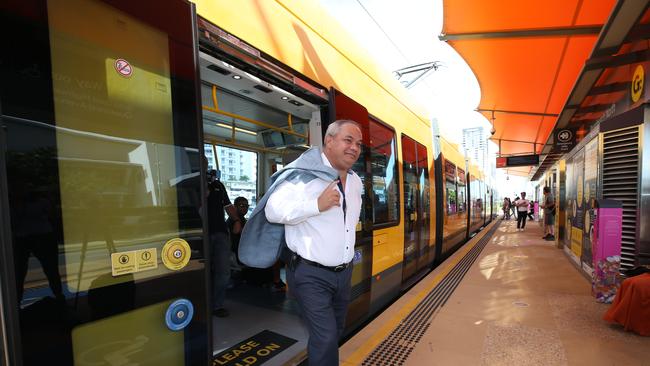
It was April 2018 during the Gold Coast Commonwealth Games that the Mayor bought the future PM a round of beers at the popular surf club and spent the evening discussing the need to extend the light rail to the airport.
Mr Albanese, who played a key role in funding the first stage of light rail more than a decade ago vowed that evening Labor would focus on the project once it won government. Those seeds bore fruit on Tuesday when the recently elected Albanese Government confirmed the $2.7bn Stage 4 extension was now on Infrastructure Australia’s (IA) priority list.
It is a significant turnaround from just six weeks ago when the future of the route appeared uncertain ahead of the election.

Then-Home Affairs Minister and McPherson MP Karen Andrews asked the former federal government not to fund the project “as it currently stands” running through Palm Beach.
Mr Tate applauded Mr Albanese’s decision and welcomed the support for the extension of the rail from Burleigh to the border ahead of the 2032 Olympic Games.
“It was worth having a beer with Albo before the election at Kurrawa surf club. That was a beer well-spent,” the Mayor said.
“We discussed light rail and the merits of things like arts and culture and I know he is passionate about public transport, so it put it in the forefront. I don’t know what (Ms Andrews’ stance) was all about but I do love the federal election result.”
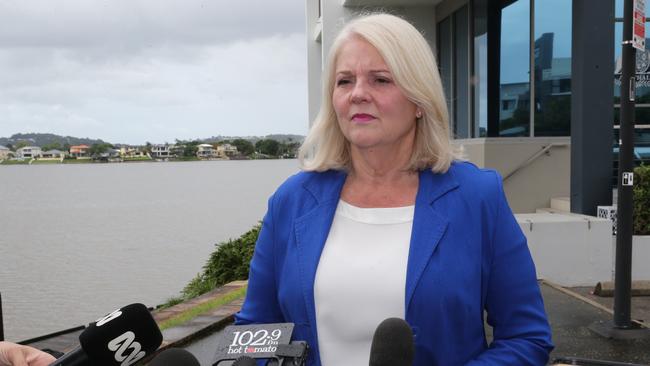
IA labelled the project as critical to dealing with the existing traffic problems on the Coast within five years.
The council and state both committed funds in this year’s budgets to progressing the business case for the 13km route, which will feature more than nine stations, two new bridges and a wildlife overpass. The controversial multi-billion dollar project is expected to run down the Gold Coast Highway between Burleigh Heads and the border via Gold Coast Airport.
It has been opposed by some Palm Beach residents who favour heavy rail and fear the project will negatively impact their suburb.
However, developers have not waited for the trams to arrive, with up to 16 new towers in the pipeline along the future route.
Mr Tate said the decision recognised the importance of the project being completed by 2032.
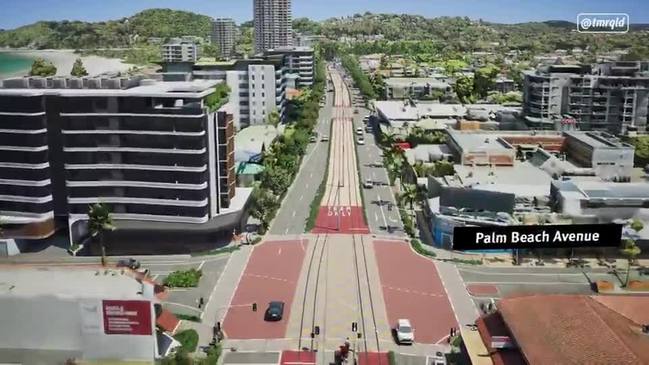
“This underscores the fact that light rail is a single project, started in 2010 by all three tiers of government because back in 2010, it was agreed that light rail would go all the way to our airport so it is effectively a single contract, being delivered in various stages,” he said.
“To see it listed on the Federal Government Infrastructure priority list is fantastic news and gives us confidence that the detailed business case work underway now will deliver a world-class project for the next century.’’
Infrastructure Australia said in its priority notice that the light rail was part of the solution to the southern Gold Coast’s increasing congested traffic.
“Travel demand in the southern Gold Coast and northern Tweed Shire area is expected to substantially increase,” it read.
“This will be driven by population and employment growth of an average 1.7 per cent and 1.2 per cent respectively each year to 2041, as well as growth in passenger numbers passing through the Gold Coast Airport.
“Increasing travel demand between the southern Gold Coast and northern Tweed Shire area will result in significant road congestion and poor journey reliability.
“Addressing these problems and better connecting Coolangatta and the Tweed through road and public transport improvements are strategic priorities.”
The IA notice said it was “unlikely that a single response will fully address the identified problems” and suggested non-infrastructure options could include “demand management and land use policies to maximise benefits”.
Mayor Tate said major earthworks on Stage 3 – Broadbeach to Burleigh – were weeks away from beginning with the build, due for completion in late 2025.
He is hoping for construction of Stage 4 to begin immediately.
“That is the best way to achieve value-for-money for all three tiers of government,’’ he said.
“It will also ensure we have the network fully functioning in time for the 2032 Summer Olympics and Paralympics.
“Maintaining our lifestyle means improving our public transport options for families, singles, retirees, students and visitors. Light rail is our major public transport spine.’’
Revealed: How much Palm Beach light rail will cost ratepayers
The ratepayer bill for Stage 4 of the light rail will hit $260m with the council to spend the money across four years from 2026 to 2030.
Council budget documents outlining the city loans program confirmed the $260m spend, and given council typically funds about 11 per cent of the these projects, that puts the total cost of building the trams to the Gold Coast Airport at $2.7b.

Details from the council’s budgeted loan program show the trams are by far the biggest cost item moving forward from 2026.
Light rail borrowing starts at $20m in 2026-27, increases to $70m in both of the following two years before reaching a final amount of $100m in 2029-30.
The Bulletin asked Tom Tate to comment on the financials, with the Mayor saying it was the council’s hope that its contribution to building light rail from Burleigh to Coolangatta will be limited to $260m.
The Mayor added the best way to approach Stage 4 was to put to tender the major bridge and wildlife corridor works associated with that stage, while Stage 3 from Broadbeach to Burleigh was being built.
“That would ensure value-for-money with those key components as there would be no accelerated costs associated,” Mr Tate said.
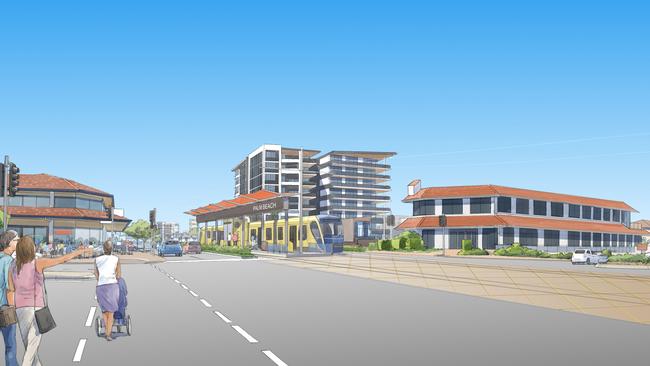
The engineering and cost challenges posed by Stage 4 include the section through Burleigh hill, and across Tallebudgera and Currumbin creeks.
The Bulletin asked Mr Tate if the outlined funding for light rail Stage 4 from 2026 through to 2030 meant the project would effectively be completed by 2030.
“Ideally, from a cost perspective, Stage 4 construction would start as soon as Stage 3 ends in late 2025,” the Mayor replied.
“That is by far the most cost-effective way to deliver this project in time for 2032 and we are working on being shovel ready for that timeline.”
Mr Tate confirmed council’s contribution was usually about 11 per cent with the rest divided up between the State and Commonwealth on light rail.
Asked if council believed the loan amount of $260m was the extent of its contribution to this Stage 4, he replied: “Yes. Once we have finished the detailed Stage 4 design – in around 16 months – we will know a more precise cost for Stage 4, but we are currently estimating around $2.7 billion in today’s money.”
One of five key priorities in the council’s Gold Coast Public Transport Plan 2018-2028 is “extending the G:Link light rail across the city” and the forward loan program establishes the city’s strong intent beyond current State and Commonwealth funding commitments.
QTrip data released by Main Roads and Transport South Coast district as part of this month’s State Budget process shows that for “planning” of light rail Stage Four the State spent $1.453m to June 30 this year.
The amount provided for 2023-24 is $1.417m but funding for future years remains blank at this point. There is no set Commonwealth funding.
The Mayor said he would welcome more funding commitments from the Palaszczuk Government and new Albanese federal government.

“Yes. The State Minister and I will take the Stage 4 business case to the Federal Government once we have exact costings,” he said.
“These will be known once the detailed business case – $15 million split between Council and State – is finished in around 16 months. I am confident the Federal Government will back the final stage given they have been joint funding partners throughout the entire project which started in 2010-11.”
Shock revelation about light rail passengers
Passenger numbers on the Gold Coast light rail have failed to bounce back post the peak of the Covid-19 pandemic, as patronage numbers fall well-short of expectations.
State budget papers obtained by the Bulletin show the trams recorded 6.07 million passenger journeys during the 2021-22 financial year, far below the 8 million people forecast to be riding the trams for that period.
A reluctance to return to public transport post-Covid and residual fears of close-quarters contact with other people have been blamed.
Transport Minister Mark Bailey confirmed the Covid hangover from 2021 was a key issue but said patronage figures were already showing improvement this year.
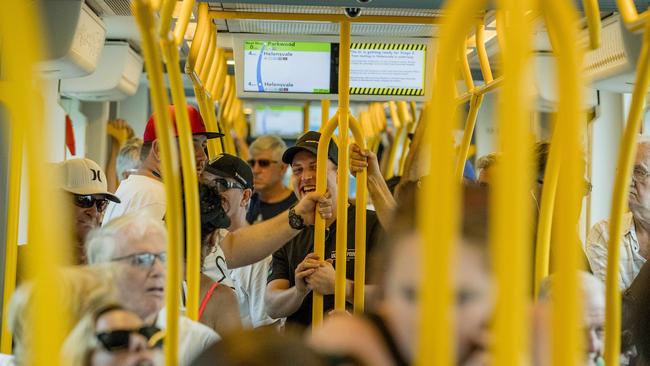
“This was headlined by Gold Coast light rail where patronage was back up to 77.6 per cent of pre-Covid levels, which is fantastic news as we near the start of heavy construction on stage three,” he said.
“Early works on Gold Coast light rail Stage 3 are almost complete with heavy construction expected to get underway in the coming months.”
Mr Bailey said the disappointing figures would have no impact on the state’s plans for either Stage 3, running from Broadbeach to Burleigh or Stage 4, which will run from Burleigh Heads to the border via Gold Coast Airport.
The Department of Transport and Main Roads (TMR) has tipped the system to carry 8.74m passengers during this financial year.
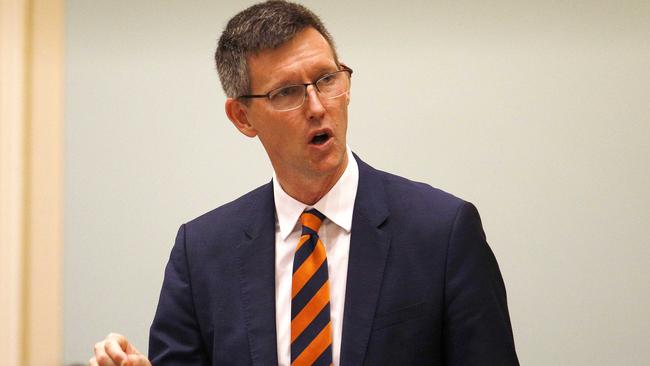
Trams were not alone in failing to reach their patronage targets during the 2021-22 financial year, with no state-run public transport service coming close to the milestones.
Across southeast Queensland, 114.25 million passenger trips were recorded, far below the target of 154.76 million.
A TMR report tabled in Parliament as part of the state budget revealed the impact of Covid on the public transport network.
“Patronage on government-contracted services across southeast Queensland is estimated to be 40.5 million trips below the 2021–22 target/estimate as public transport usage was significantly impacted by Covid-19 restrictions, as well as severe flooding in early 2022, the report read.
“The variance between the 2021–22 (figures) and 2021–22 target/estimate is due to lower patronage on the back of continued Covid-19 impacts, flooding in southeast Queensland in early 2022 and travel behaviour changes.
“The 2022–23 target/estimate reflects an anticipated recovery in patronage.”
More than $4.37m was committed in the budget across the forward estimates towards planning for Stage 4, while a further $203,000 was put towards planning the extension of the heavy rail south of Varsity Lakes to the airport.
Construction of light rail Stage 3, which has been beset by delays and cost blowouts, will begin within weeks after a contract was finally signed in March.
The project is expected to take at least three years to build.
Mayor Tom Tate is pushing for construction of Stage 4, a key project for the 2032 Olympic Games, to begin as Stage 3 is completed in 2025.
Premier Annastacia Palaszczuk last week said she expected to have positive discussions with the new federal government over the project.
“I am quite sure we are going to have positive relations and very co-operative deals now with the (new) federal government on that,” she said.
“We will have timelines in place and as we go through the detailed planning, the business case will be submitted to the government, we’ll be able to get funding and then make further announcements.”
More Coverage
Originally published as Palm Beach light rail to be named ‘priority, cost of Stage 4 Burleigh to border extension revealed




